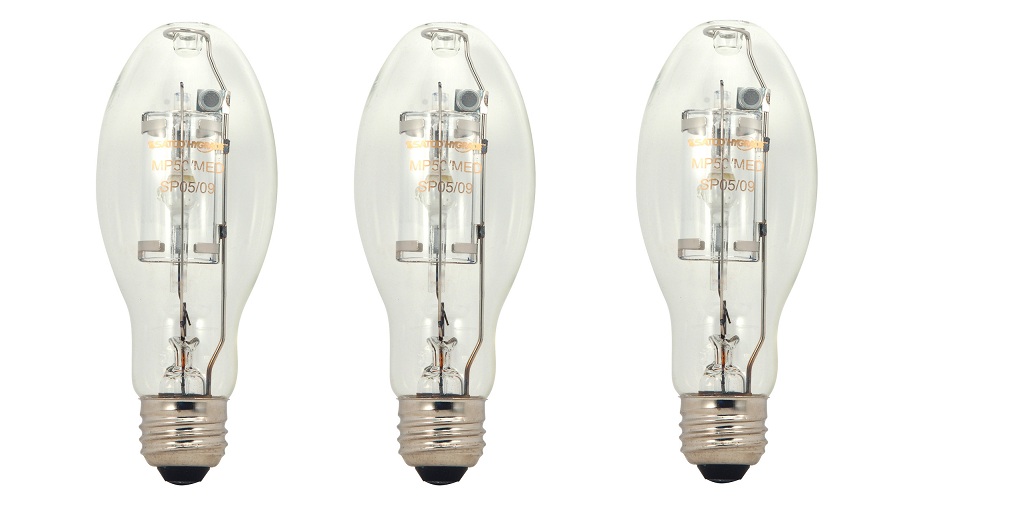
Metal halide bulbs are a class of HID (high-intensity discharge) lamps that are much more efficient and longer-lasting than incandescent bulbs and that produce higher-quality light. These features make them highly practical for lighting up stadiums, arenas, racetracks, parking lots, warehouses, and other wide areas.
But they work via very different principles. Read on to learn more.
Metal Halide Lamp Structure and Principles of Operation
The basic structure of most metal halide bulbs consists of a fused quartz tube (the inner arc tube) with two electrodes, one at each end, as well as a starting electrode, inside of an outer glass envelope. They are similar in operation to mercury vapor lamps.
Between the two electrodes, a concentration of mercury and metal halides (salts) are condensed on the inner surface of the tube. The inside of the tube also contains a concentration of inert gas, such as argon or xenon.
When current is supplied to the lamp, a spark jumps from the starting electrode through the tube to the electrode on the other side, creating an electrical arc.
As electricity flows through the tube, it fights against the resistance of the gas in the tube. This resistance excites the gas, ionizing it, and vaporizing the mercury in the tube.
As the mercury vaporizes, this creates a path of lesser resistance for the electrical current, which will then stop flowing from the starting electrode and begin to flow through the main electrodes, continuing to pass through the vaporized mercury and ionized gas medium.
The lamp will heat up further as current between the two main electrodes and through the mercury vapor continues. This excites and vaporizes the metal halides, causing ionic dissociation. These halides diffuse away from the arc and recombine before repeating the process.
As the metal halide ions recombine and release their potential energy, they emit a bright white light. This process is fairly energy efficient and produces extremely high-quality light. These lamps are also available in a wide range of colors and color temperatures and deliver a very high color-rendering index.
However, metal halide light bulbs come with additional considerations. For instance, they require a warm-up period before they will reach their full brightness, usually between 1 and 15 minutes.
They also produce a lot of heat and UV emissions (mercury vapor releases UV light when stimulated by an electric current). As a result, the outer envelope of the glass bulb is typically made with borosilicate glass, which has a very low coefficient of thermal expansion and which is physically very durable. Often, the outer bulb is treated with a special coating to help it filter out UV radiation, protecting nearby materials from degradation and improving overall safety when operating the lamps.
Nonetheless, these lamps are widely used for their high luminous efficacy and light output, long lamp life, high CRI (color-rendering index), and high light quality.
Where Can You Get Metal Halide Lamps?
Looking for HID lighting like metal halide bulbs, lighting fixtures, or corn cob LEDs to replace them? Visit Lightbulb Wholesaler online at LightbulbWholsaler.com. They carry a wide range of HID lighting (metal halide lighting included) as well as LEDs, fluorescent lights, incandescent lights, and more. Check out their website or get in touch with them at 1-800-492-9660 for more information.


